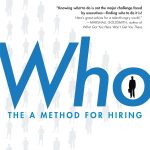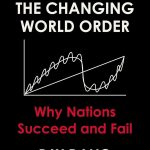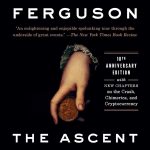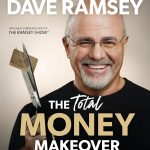

Customers say
Customers find the book provides a comprehensive overview of money’s role in the economy. They appreciate the interesting details and clear explanations of financial transactions. The book is described as readable and accessible, with well-reasoned arguments that make a technical subject accessible to anyone.
Make It Yours – See Your Price On Amazon!
Your Sales Price $30.00 - $7.72
A quick rundown of this product’s key features:
WALL STREET JOURNAL BESTSELLER
Money permeates our everyday lives—it literally makes the economic world go round—and yet confusion and controversy about money abound.
In The Power of Money, economist Paul Sheard distills what money is, how it comes into existence, and how it interacts with the real economy.
Money issues dominate the news, but economic jargon and the complexity of it all can be bamboozling. Leading economist Paul Sheard is known for his ability to see the forest and the trees and demystify complex economic phenomena.
With The Power of Money, Sheard empowers readers to become better-informed economic citizens by providing context for some of the biggest questions surrounding money, such as:
How does money come into existence?
How is the process of money printing governed?
Does government debt ever have to be repaid?
Are financial crises bound to happen sometimes?
Can the euro, a currency without a government, survive in its current form?
Are proposed cures for economic inequality worse than the disease?
What is the future of money—are cryptocurrencies going to change everything?
Financial enthusiasts and non-specialists alike will be surprised by the answers to these questions. The Power of Money provides a comprehensive foundation of knowledge to help you feel better informed and more confident as you follow and engage in economic and financial affairs and policy debates.
Our Top Reviews
Reviewer: Amazon Customer
Rating: 5.0 out of 5 stars
Title: Understanding the power of money to address inequality and create wealth
Review: The book was an eye-opener for me in many respects, and particularly in clarifying the role of money in addressing the issue of inequality. The myth about taxing the rich as the only means to do so, and why that is not always the case, was an important insight. I also understood better the tradeoff that society has to consider when it faces the choice between compassion and efficiency. As Dr. Sheard points out, too little compassion can lead to societal dysfunction and too much of it can have bearing on productivity. I also understood better the connection between raising of taxes and withdrawal of purchasing power. This is a highly readable book, which I recommend to anyone interested in connecting the dots between public finance and social justice. Thank you, Paul, for shedding light on this subject and many others.
Reviewer: New York Reader
Rating: 5.0 out of 5 stars
Title: A Comprehensive Book on the World Financial System
Review: The interesting details of financial transactions contained in this book should be read by professionals and small investors alike. It explains in a no nonsense way how Central Banks and Financial Institutions interact.I found the details of the Lehman bankruptcy eye-opening. And the chapters dealing with the Euro folly of the European Union, the logic of the Euro, power of international money, as well as Secretary of the Treasury John Connally’s comments on the US dollar were extremely perceptive.Finally, the book explains the Crypto craze in interesting detail. Overall, this is a very timely and provocative look at the financial systems worldwide. I highly recommend it.Julian Gingold
Reviewer: sfmillburn
Rating: 4.0 out of 5 stars
Title: A good read with a lot of information
Review: This book was a good read and taught me a lot about how money actually works. I would caution that it emphasizes Modern Monetary Theory which may be falling somewhat out of vogue. Still, I learned a lot from it.
Reviewer: Book reader
Rating: 5.0 out of 5 stars
Title: Eye-Opening
Review: This is a terrific and much needed book guaranteed to make readers rethink their assumptions regarding government debt and economic policy. Paul Sheard’s deep dive into the mechanics of money creation and money flow provides the reader with the intellectual framework with which to think and engage on these subjects. In highly readable prose, he makes a technical subject accessible to anyone seeking a better understanding of money, markets, and central bank policy. Sheard’s arguments are fresh, well-reasoned, and thought-provoking. The author argues forcefully that government debt is generally misunderstood, and that effective economic policy requires a closer marriage of monetary and fiscal policy as opposed to the barriers that have been enacted to separate the two. The discussion of the major economic policymaking issues over the last several decades is likewise very useful.
Reviewer: Paul V.
Rating: 5.0 out of 5 stars
Title: How Money Really Works
Review: I’m a professional investor and before reading this book, thought I knew how the monetary system works, more or less. Boy, was I wrong. This book clearly explains the relationship between the Treasury, the Fed and the Banking system, and describes the true meaning of the national debt. (Going way beyond the tropes about spending our grandkids’ money.) It’s a bit technical at times but you don’t need an accounting degree to understand it.
Reviewer: Seth
Rating: 5.0 out of 5 stars
Title: A Great Overview of Money’s Role in Our Economy
Review: This book is an easily readable overview of most of the issues facing the modern macroeconomy. It is evenhanded and well written. I highly recommend it.
Reviewer: Professor Kravchuk
Rating: 5.0 out of 5 stars
Title: Required Reading
Review: For anyone interested to know how the financial system actually works, this is the book to read.
Reviewer: Amazon Customer
Rating: 5.0 out of 5 stars
Title: A highly readable explanation of a vital subject
Review: This book is a pleasure to read because it so clearly explains important concepts that are widely misunderstood, like where money comes from, the role it plays in our economy, and the role the Treasury and Federal Reserve play in facilitating its function. Without being argumentative at all, Dr. Sheard corrects some of the misunderstandings about money and banking commonly found in textbooks by some of our best-known economists. The Power of Money makes a challenging topic interesting and understandable.
Reviewer: Geoff Crocker
Rating: 4.0 out of 5 stars
Title:
Review: Paul Sheard provides a very lucid, very readable and well explained account of how money really works in the economy. He eloquently dispels several powerful myths. All money is initially created rather than borrowed, and quintessentially is therefore not debt. Historically it was created in metal or paper, but now is largely created electronically, ie out of ‘thin air’, and thus with 100% seigniorage. Commercial banks create money when they make business or personal loans which are then accounted as a customer debt. Central banks create money when they purchase government bonds in secondary markets. This is also accounted as government debt, but as Sheard shows, wrongly so, an error which has immense consequences.Sheard appears to follow the MMT position that money is essentially debt, but that at government level, it’s not really debt, not repayable or repaid (p38), and anyway is balanced by net surpluses in the private and overseas sectors, an identity due to Francis Cripps and Wynne Godley, but importantly a ‘post-hoc’ identity, not a simple direct flow (p50). Conventional accounting practice insists on equal liabilities and assets in the central bank’s balance sheet, despite the fact that ‘thin air’ cannot be so accounted. When central banks create money to buy government debt, for example from a pension fund, that money is necessarily re-banked, some of it reaching back to the central bank, which is then said to have a debt on the same money it initially created! Not calling money debt in the first place would eradicate this nonsense.There are some big consequences here which Sheard doesn’t fully draw out. Firstly, when government debt is held by its own central bank, which is owned by the same government (or in the case of the Fed is required to pay any surpluses to the US Treasury), then this is zero net debt. Arguments for austerity based on this debt therefore fail. Secondarily, the common prohibition on direct central bank money financing of government expenditure restricts the central bank to purchasing government debt only in the secondary market, thus creating huge risk-free gains for primary market traders. This is a scandal Sheard doesn’t mention. He explains how central banks use the interest rate to seek to control inflation (chapter 3), points out the limits of this strategy when interest rates are already very low, but doesn’t fully critique monetarism for this reliance on the single tool of the price of money to manage the economy. The interest rate has several other effects, from reducing aggregate demand where people hold mortgages, to revaluing the currency, to affecting business investment costs.Given Sheard’s leading executive position in global finance, it’s surprising that his clear and correct views have not challenged and replaced orthodox views of debt constraint amongst central bankers and politicians? In his account of the 2008 collapse of Lehman Brothers, where he argues Lehman should have been rescued, he acknowledges his role as global chief economist at the time, but offers no acknowledgement of any responsibility. His account of the crisis is entirely monetary and doesn’t address the fundamental cause of deficient effective aggregate demand.Sheard is clearly an extremely well qualified financial expert. But when he ventures off-piste into social and ethical issues, he declines into superficial comment. This is particularly so in his chapters on inequality and the Euro. He defends huge levels of inequality as market efficient, with no reference to John Rawls or anyone else on social justice. Christ famously threw the market out of the temple, but for Sheard the market is the temple. Like the MMT school, Sheard derides the Euro. Whether this is because it challenges the axiom that governments can create money in their own currency, or because the Euro threatens the dollar hegemony which Sheard celebrates, isn’t clear. He is correct to point out that the Euro makes the integration of monetary and fiscal policy more challenging, but as the EU and ECB have shown, this can be achieved, and the Euro works. His book would be more powerful if he had concentrated on his core expertise.
Price effective as of Mar 26, 2025 22:25:07 UTC
As an Amazon Associate Dealors may receive a commission for purchases made through these links.









